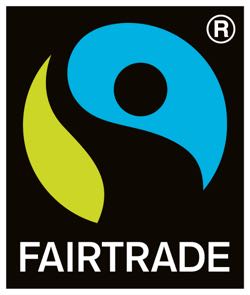
Fairtrade, where did it originate and what does it mean?
Let’s start by saying that, if you were in any doubt, Fairtrade coffee does not mean organic coffee, or necessarily organic anything.
So, what is 'Fairtrade' ?
The goals of the Fairtrade movement are probably best summarised by the slogan used in the late 60’s: “Trade, not Aid.”
The ‘movement started off in the 40’s and 50’s, where several organizations, religious groups and various NGO’s decided to promote the goods of developing nations. The items sold were mostly handicrafts. It wasn’t until the late 60’s that momentum began to grow in to what it is today. Back in the 60’s the movement was more a political response with students targeting companies for their unfair practices and exploitation of third world countries.
In 1968 the slogan was adopted by the United Nations Conference on Trade and Development that drew attention to the development of fair trading practices with developing nations and the need to develop fair trade distribution relationships with those nations.
Organization like Oxfam in the UK became some of the first ‘alternative trading organizations’ (ATO) that imported handicrafts and sold them through their sores and mail order catalogues.
Around this time saw the introduction of the “Whole Earth Catalogue”. This contained the dealings of merchants, artisans and scientists with developing nations and sought to appeal directly to consumers that had an interest in the movement and wanted to help support independent producers. This alternative method of trading also sought to bypass the mainstream retail organizations, essentially building on the student ideology at the time.
Worldshop appears on the scene
In 1969 the first “Worldshop” appeared. These shops started growing in Europe, mainly staffed by volunteers. They provided a direct retail element to the movement, selling goods from developing nations (under developed at the time) under the principles of fair trade agreements.
The organization grew throughout the 70’s, expanding their markets and products offered and saw the number of ATOs and Worldshops increase.
During the 80’s the movement ran into trouble as demand for its handicraft products started to wear off and attention was drawn to agricultural issues in the target nations, particularly the impact of falling commodity prices on the farmers in those regions.
Rethinking their business models, many ATO shifted emphasis to agricultural products and this saw the growth of fair trade in commodities like tea, coffee, fruit, rice, spices, sugar and a range of other products we rather take for granted.
One of the major factors that stimulated growth in sales from the movement came in the late 80’s with the introduction of ‘certification’ and labelling. In addition, until that point one could only buy fair trade products through specialist outlets like the Worldshops. Getting the products in to mainstream stores was a convenience and trust issue. Convenience because the main supermarkets were where most people shopped and trust because amongst all the other products, how could you be sure you were really buying form a fair trade provider.
Enter Fairtrade Certification
The answer came through the introduction of an independent Fairtrade certification initiative and subsequent labelling initiatives that allowed goods from fair trade partners to be sold outside of their normal channels, the Worldshops.
The creation of a standards setting organization (FLO International) and a reciprocal certification group (FLO-CERT), enabled independent auditing of producers and merchants to agreed standards. This in turn would begin to educate and allow consumers to readily identify Fairtrade products.
Of course, Fairtrade certification went further than just the quality of a product. It also sought to adhere to principles that safeguarded workers, human rights, fought against child and slave labor.
In 2002 FLO simplified the labelling system and introduced a single Mark to replace the twelve in use at the time. This is used internationally except in the US where the Fair Trade Certified Mark is used.
The Fairtrade organization has played its part in the growth of organic coffee as one of the organizations principles is to promote sustainable farming practices. This has led to the encouragement by the organization for local farmers to adopt organic farming techniques.
Fairtrade – not without controversy
Fairtrade has prompted its fair share of controversy and drawn plenty of criticism both politically and economically. Some believe that the farmers don’t really receive any real benefits from the scheme and don’t receive a fair share of profits from the higher prices Fairtrade products enjoy.
Others believe it is simply a way to introduce subsidization by setting a price floor for over priced goods. Others simply suggest that Fairtrade is no more than an elaborate marketing ploy.
The whole Fairtrade history, its development, shortcomings, advantages, criticisms and exploitation by others is an intense learning experience. We’ve hardly scratched the surface here. As responsible consumers we ought to be aware of what is going on and what is behind or contained within the products we are invited to consume.
What seems clear to us is that Fairtrade had a humble beginning and certainly noble intentions, but like many such initiatives, it may have been compromised or got hijacked by the very organizations and people the initiative sets out to differentiate itself from. However, this shouldn’t be taken as a condemnation of the organization as it stands today, just that as consumers we have to be a lot smarter in the choices we make and in how we interpret the information presented to us.
